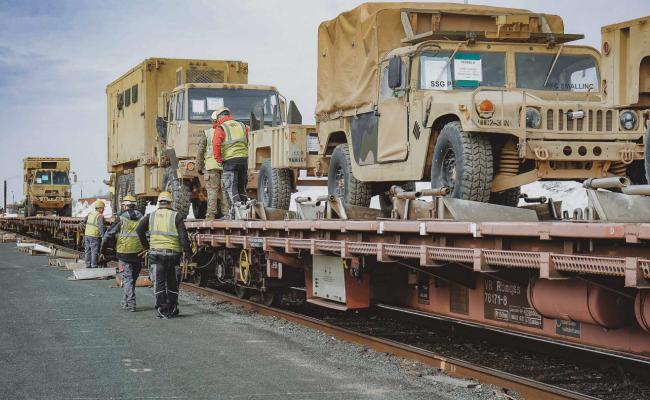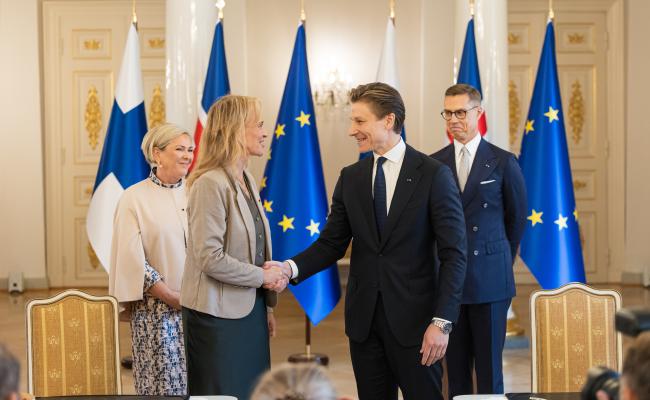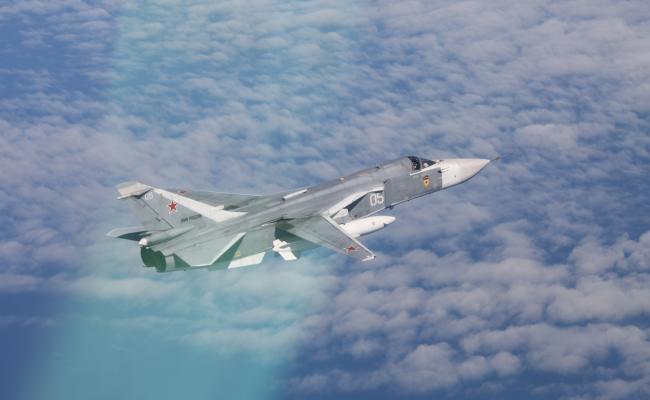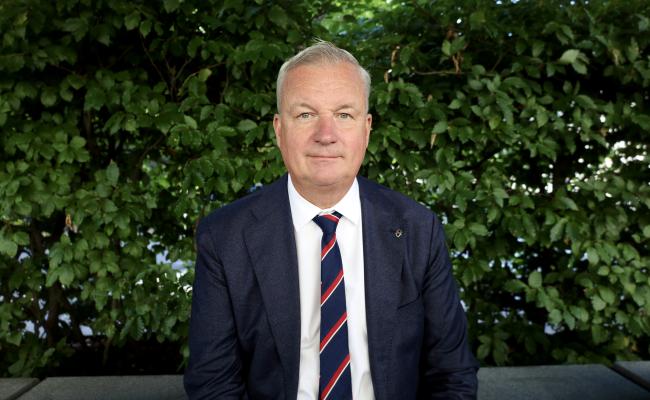Commander of Finnish Jaeger Brigade Keeps His Guard Up, but Doesn’t Think Russia Will Attack
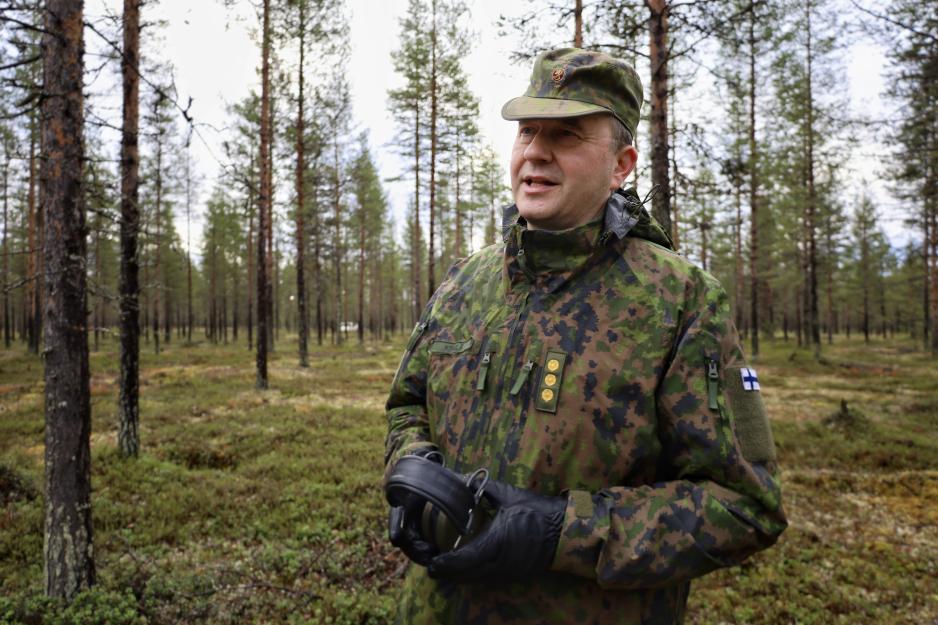
Colonel Mark Kivelä, Commander of the Jaeger Brigade in Lapland, Northern Finland. (Photo: Astri Edvardsen)
Sodankylä (High North News): Russia is unpredictable, but unlikely to cross the threshold of NATO's Article 5, says Marko Kivelä, Commander of the Finnish Jaeger Brigade. "At the same time, it is best to be prepared and take measures to avoid such scenarioes," he underscores.
In the deep Finnish woods, Colonel Marko Kivelä, Commander of the Jaeger Brigade in Lapland, is showcasing the conscript training for the defense of NATO's northern flank.
“The threat landscape is characterized by Russia's unpredictability. We don't really know the basis for the Russians' decisions, and since all decisions are made in a very small circle, it is difficult to assess what they might do. Therefore, we must continue with efforts for deterrence and defense in the North,” Kivelä says to High North News and continues:
“Personally, I do not expect actions from Russia above the threshold of NATO's Article 5 here in the High North or elsewhere in Europe over the next few years. At the same time, it is best to be prepared and take measures to avoid such scenarios.”
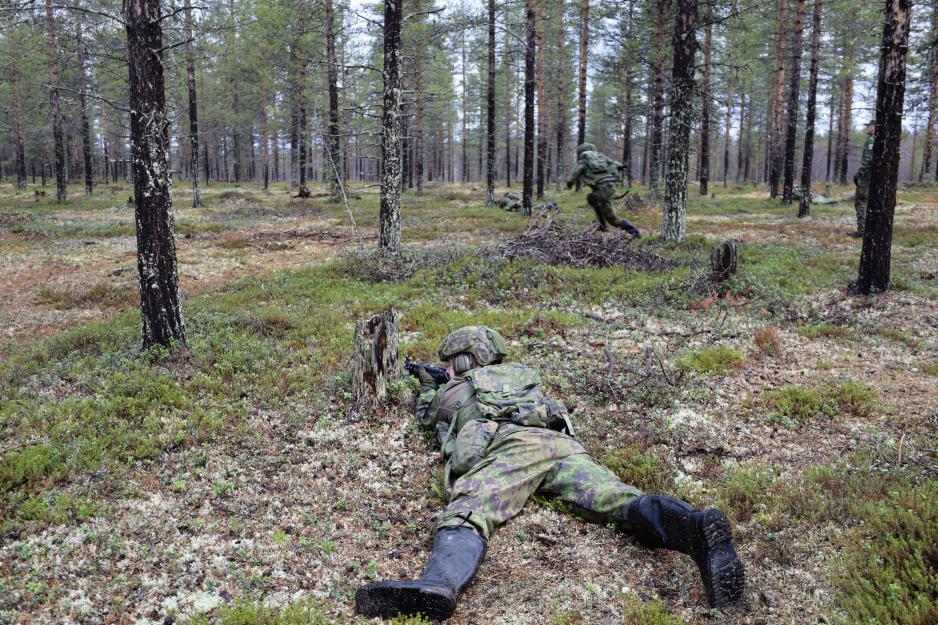
Conscripts in the Lapland Jaeger Battalion are advancing between the pine trees. (Photo: Astri Edvardsen)
About 12 miles separates Sodankylä garrison, at which the Jaeger Brigade's headquarters is located, from Russia.
The Russian Army in the High North is significantly weakened due to the war in Ukraine, but Russia continues its build-up of military infrastructure, and has heralded a doubling of its land forces along the border with Finland and Norway.
“My main concern is that Russia is in the process of strengthening its ground units on the Kola Peninsula. For example, they are changing the organization from brigades to significantly larger divisions. This is, of course, something that both the Finnish Army and the Norwegian Army are following closely,” Kivelä points out.
The Jaeger Brigade's area of operations
· Lapland is Finland's northernmost region. It is located north of the 67° latitude.
· With an area of 100,366 km2, Lapland constitutes almost a third of the country and a quarter of the border with Russia (380 of 1340).
· The northern border is monitored by the Lapland Border Guard. The Finnish Border Guard is a paramilitary unit organized under the country's Ministry of the Interior.
· The region is sparsely populated with 176,134 inhabitants (about 3% of the Finnish population).
Boosting the Finnish defense
Finland is also strengthening its defense forces.
Earlier this fall, the government presented a proposal for a defense budget of EUR 6,3 billion. This includes funds for the army's planned materiel projects in the 2030s. The budget proposal includes, among other things, authorities to launch army materiel procurement projects for the 2030s, among other things.
The Jaeger Brigade Commander is pleased with the defense funding.
“Finland is now spending significant resources on military reinforcement. In the army, we have been able to start planning the procurement of equipment that will take place from 2029 onwards. For example, we will buy new infantry combat vehicles,” says Kivelä.
“As of today, we have sufficient funds for operational activities. We have enough training and exercise activities and are able to maintain readiness at a good level,” he adds.
Overall, the Finnish Defense Forces have a reserve of around 900,000 and a wartime strength of 280,000 soldiers.
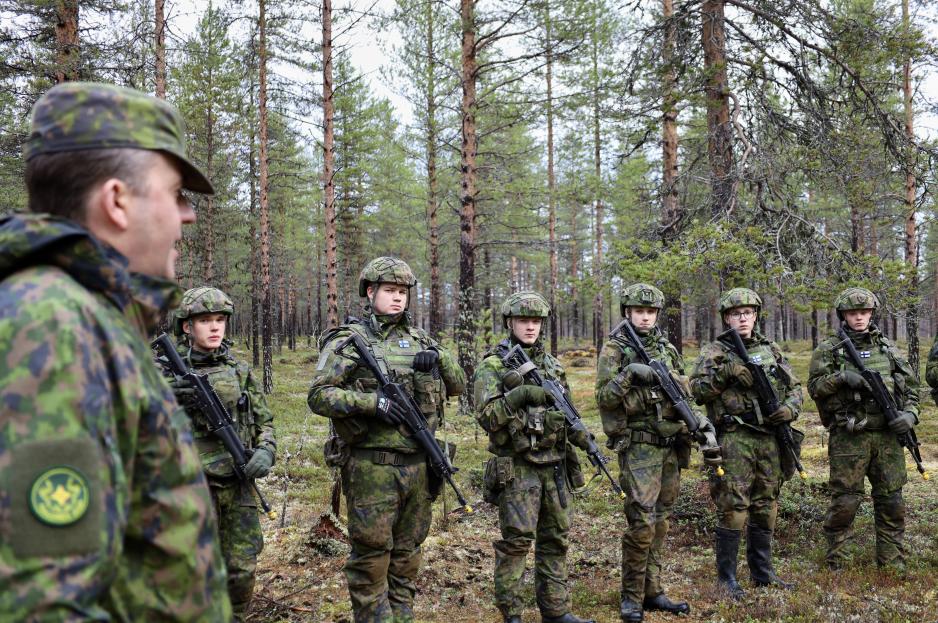
Brigade Commander Marko Kivelä provides the conscripts with a pep talk after the training. (Photo: Astri Edvardsen)
NATO FLF Finland
The strengthening of deterrence and defense in Northern Finland is also taking place through the establishment of a NATO Forward Land Force (FLF).
The Jaeger Brigade will host this force, which will be located in both Sodankylä and Rovaniemi.
Sweden has taken on the role as framework nation for the forward presence, and Norway, France, the United Kingdom, Denmark, Iceland, and Italy will contribute in its development.
“The planning of the structure is still ongoing, so we don't know yet exactly what this will mean for us. The Finnish Minister of Defense has said that the idea is that there will be a training-based presence here in Lapland,” says Kivelä and continues:
“This could mean that we will have a small staff in the Rovaniemi and Sodankylä areas that will be responsible for planning and various arrangements so that we can receive a battalion from, for example, Sweden. The battalion can also be reinforced as a brigade, which is the general requirement for NATO FLF.”
“As it stands now, the forward land force will mostly be here to conduct training. If there is to be a more permanent presence, we will have to build up an infrastructure for that. Today, the infrastructure is very limited in Sodankylä and expanding it will take a few years.”
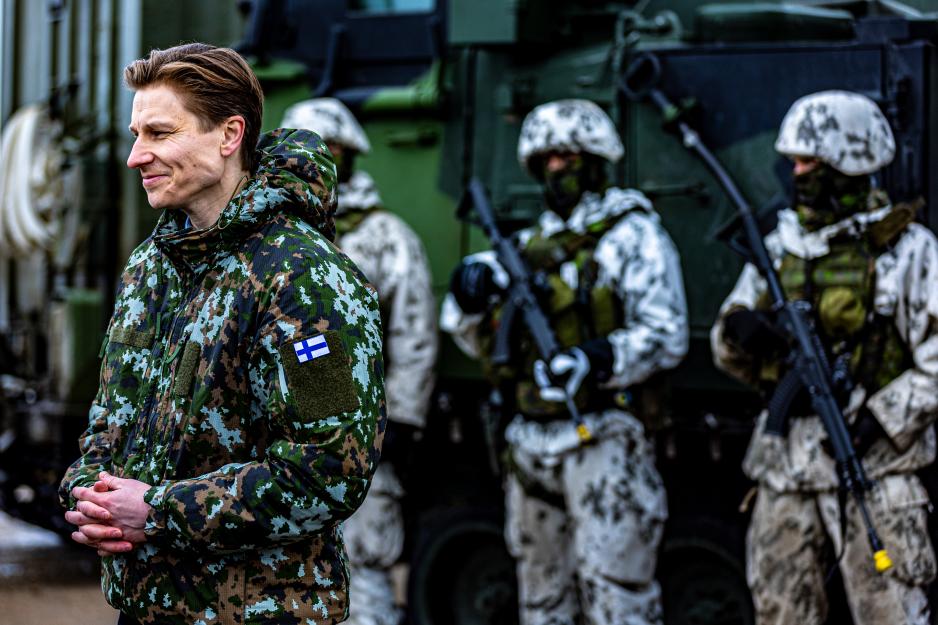
FLF Finland will enhance NATO’s deterrence and defense posture on the northern flank, and is a strong expression of allied unity and solidarity, emphasizes the Finnish Minister of Defense, Antti Häkkänen (National Coalition Party). (Photo: Tue Skals)
Under the NATO umbrella
Being able to plan for the future within the framework of NATO is very good, the brigade commander thinks.
“I am happy that Finland is now a member of NATO. This provides significant deterrence, including with nuclear weapons if necessary, and will help us avoid a situation where we have to defend ourselves against an attack.”
More specifically, he also sees great value in joining forces with neighboring countries Norway and Sweden.
“Finnish defense capabilities in the North are good, but together with Norwegian and Swedish capabilities, they are even stronger.”
Within the Finnish Army, the Jaeger Brigade is responsible for the direct cooperation with the Finnmark Brigade in Northern Norway. Naturally, it also cooperates with the Swedish Army in the North.
We have very good interoperability.
Well-coordinated
How do you assess the cooperation between Finnish, Norwegian and Swedish land forces?
“I think that we have very good interoperability. The ability for operational cooperation is generally at a high level because both Finland and Sweden were part of NATO's Partnership for Peace program from 1994. All the basic things for being able to act together have been developed over the decades since then. And since we joined NATO, the coordination of tactical matters at the unit-to-unit level has also become quite good,” Kivelä responds.
“At the same time, Finland and Sweden, which have long been militarily non-aligned, have, of course, developed some systems and capabilities from national perspectives. Now that we are all members of NATO, we need to align, for example, our communication solutions. In that context, we still have a lot of work to do,” he adds.
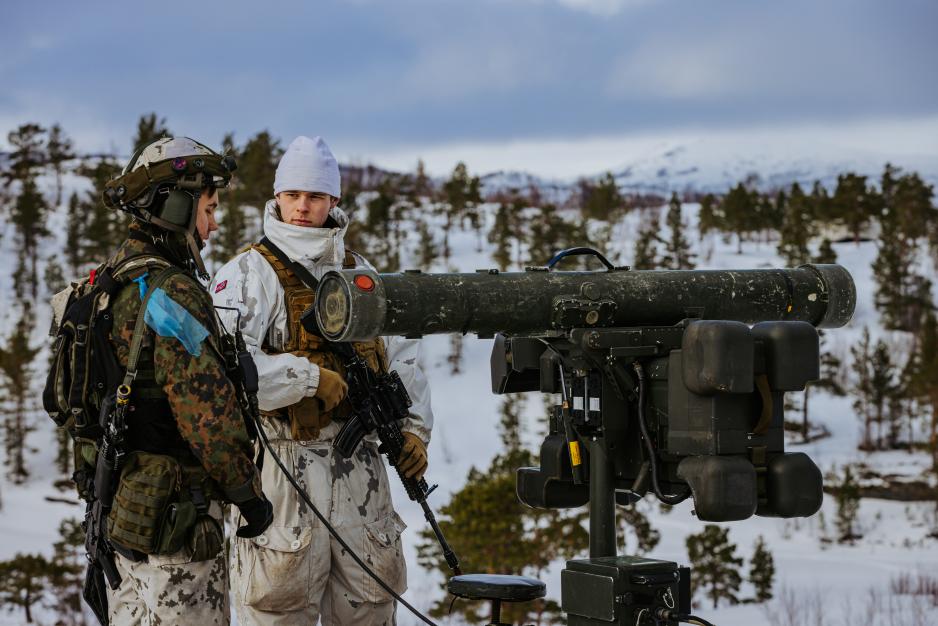
During the Joint Viking 2025 exercise, Norwegian and Finnish land forces practiced interoperability in dealing with low-altitude air threats at Setermoen firing and exercise range, Northern Norway. Specifically, a unit from the Jaeger Brigade's air defense battalion in Rovaniemi was integrated with forces from the Porsanger battalion. (Photo: Ole-Sverre Haugli/the Norwegian Armed Forces)
Major exercise activity
Since 2019, the Jaeger Brigade has hosted a number of international exercises, particularly including Sweden, Norway, the US, and the UK.
“All these international exercises give us good practice and experience, and they build up NATO’s capabilities to defend Lapland and the European Arctic. At the same time, I would like to give some of them to Southern Finland,” says the brigade commander and smiles.
“We did not plan for so many international exercises in 2015 when the Jaeger Brigade was set up as it is now. So, planning and carrying out this exercise activity is something we do in addition to our normal tasks, such as maintaining operational readiness, training conscripts and so on.”
“A lot of time and resources are spent on a number of meetings and other preparations to be able to conduct these exercises,” he elaborates.
The Jaeger Brigade's international exercises in 2025
· Lapland Stone in Länsipohja – Finland, Sweden
· Arctic Forge in Sodankylä – Finland, the US, Canada
· Lightning Strike and Northern Forest in Rovajärvi – Finland, Sweden, the UK
· Lapland Stronghold in Kolari – Finland, Sweden
No restrictions
Finland has no self-imposed geographical limitations for allied exercise activity near the border with Russia, like Norway has in Eastern Finnmark.
“We use training areas that are suitable for international exercises, such as our shooting and training range in Rovajärvi near Rovaniemi, and currently have no plans to conduct exercises close to the eastern border. At the same time, I believe that we should not be afraid of provoking Russia if we train and practice in our own areas. So exercises closer to the border areas may take place in the future,” says Kivelä and continues:
“In the Finnish debate, questions have been raised about possible allied training activities at the Ivalo border guard garrison in Lapland, which is among the agreed areas under Finland's bilateral defense cooperation agreement (DCA) with the United States. The garrison is located 60 kilometres from the border with Russia, but there are no US troops or facilities there.”
Geography places us next to each other facing east.
Cold Response 2026
In March, the major winter exercise Cold Response is coming up.
Most of the activity will take place in Norway, with Bardufoss and Skibotn in Northern Norway serving as the centers of land operations, while the side event will take place at the Jaeger Brigade's firing and exercise range in Rovajärvi.
“During Cold Response, we will have a field exercise where one group will carry out an attack that another group will defend against. This will last about a week, but the build-up will be much larger as we will receive forces from various NATO countries both in Sodankylä and Rovaniemi.”
Cold Response will not include land forces crossing the Norwegian-Finnish border, as was the case during Nordic Response 2024, which is partly due to resources, said the Norwegian Army Chief, Major General Lars Lervik, to HNN earlier this fall.
However, the future will offer more co-training for the northernmost brigades, states Kivelä.
“We will definitely exercise and train more with the Finnmark Brigade because geography places us next to each other, facing east,” he says.
Arctic warfare training
In the run-up to Cold Response, the Jaeger Brigade will be busy providing cold-weather training and passing on area knowledge to participating forces.
“Our special task within the Finnish Armed Forces is to be the training center for Arctic warfare. We train both Finnish and international forces every winter in how to survive and operate in the cold, which we call environmental training. This is, of course, something that the Norwegian and Swedish armies also provide to allies,” says the brigade commander and continues:
“One of the most important things we do is to train allied instructors, officers, or non-commissioned officers, so that they achieve good skills and can, in turn, train their personnel. In this way, international forces that come to exercise in Lapland already have people among them who can conduct environmental training”.
The organization of Jaeger Brigade
· Headquarters in Sodankylä. The garrison in Sodankylä was established in 1964 with an infantry batallion, and was expanded to the Jaeger Brigade in 1979.
· Two battalion-level units: Lapland Jaeger Battalion in Sodankylä and Rovaniemi Air Defense Battalion. These have five and three company-level units, respectively.
· Lapland Regional Office for management of conscription matters.
· Lapland Military Band.
· About 430 professionals, of which 75 are civilians and 60 are female.
· Around 1,400 conscripts, including 50 volunteering women. Of these, 900 serves in the Jaeger Battalion and 50 in the Rovaniemi Air Defense Battalion.
Focus on readiness
As implied, the main operations of the Jaeger Brigade focus on operational preparedness, training conscripts and reservists, and being prepared to mobilize wartime forces to defend Lapland.
“After the Russian annexation of Crimea in 2014, the system of the Finnish Army was partly changed. The Army went from being primarily a training organization to becoming a readiness and training organization. It was decided that the brigade-level units departments should always have a conscript unit that is fully trained in readiness. Our readiness unit is an infantry company reinforced with armoured vehicles, heavy mortars, engineers and ground-based air defense,” Kivelä outlines.
The brigade has two intakes of conscripts a year, with an estimated 1,100 people per round, of which around 40-50 are women who volunteer.
“The basic training is about six months and we train the conscripts in infantry, air defense, signal processing, military engineering and logistics. More and more conscripts are serving longer because they enter the readiness phase for an additional six months.”
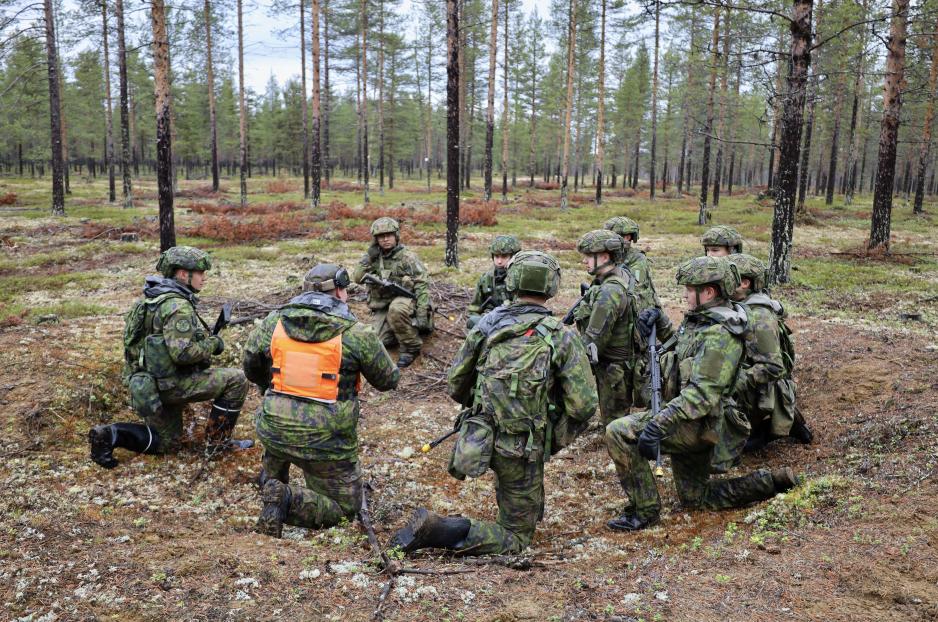
After having completed basic conscript training, many young Fins go into a readiness phase with additional training. (Photo: Astri Edvardsen)
High skill level
At the time, the Jaeger Brigade had a total of 1,400 conscripts in training.
“Most conscripts are well motivated, but their physical fitness has been steadily declining over the past 30 years, and now mental health problems are the biggest challenge in the wake of the Covid pandemic,” the brigade commander points out and continues:
“At the same time, I am very happy with our conscripts. For example, take those we now have in the readiness unit. During the last exercise, they went four days without sleep. On the fourth morning, they were still smiling and went to practice an attack.”
“The level we manage to train them at during these nearly 12 months is actually quite high. If you compare them to professional soldiers in training exercises, they do not fall short in terms of skills,” Kivelä underlines.



